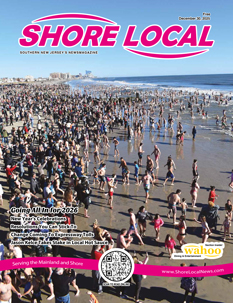Drink Up!
By David Setley
Welcome to week two of our Summer Wine Tour of Italy. Last week, we explored the northwest region of Piemonte. This week, we’ll cross the northern section of the country to investigate two regions: Alto Adige and the Veneto. Though close in proximity, the wines from these regions could not be more different. Let’s get started.
Alto Adige is in northeast Italy, between Venice and Milan at the southern edge of the Alps. Those lucky enough to travel there are rewarded with amazing scenery, from snow-capped mountains, rolling hillsides, and secluded green valleys. Alto Adige is where the Swiss Alps meet the Italian Mediterranean. Both red and white grapes grow here, though the fresh white varietals, particularly Pinot Grigio, are what have put the region on the wine map.
Pinot Grigio, the same grape as the French Pinot Gris, is believed to be a mutation of Pinot Noir. Although the grape is a pink to light purple grape, it becomes a light white wine because the skins are separated from the juice after harvesting. In most cases, Pinot Grigio wines are drier than Chardonnay, though the high acidity and crisp freshness misleads people into interpreting the wine as sweet. The flavor profile tends to be dominated by the fruit flavors of ripe peaches, melons, and citrus with notes of honey and tree nuts. Two outstanding examples of Italian Pinot Grigio from the Alto Adige region are Elena Walch-Alto Adige Pinot Grigio 2020 and Sant’Elena-Pinot Grigio 2019.
The Veneto wine region of Italy is immediately adjacent to the southeast of the Alto Adige region and is just outside the city limits of Venice. While we are enjoying Italian white wines, the Veneto has one that may bring back memories for some of you. If you are from my generation, you may remember the very popular Soave Bolla, an inexpensive white wine that just so happens to be one of the first Italian white wines I ever had. Soave is the appellation where the wine is produced, and Garganega is the primary grape. Garganega is the dominant white grape produced in the Veneto. Well… Soave wines are back, and the quality has improved significantly! If you would like to try a fine wine from the Veneto region, I recommend Pra Otto Soave Classico 2023. This wine is 100% Garganega and is a dry, medium-bodied, crisp and fresh wine with a wonderful blend of green apple and kiwi fruit that is balanced with an herbal and stone minerality. It is a great alternative to Chardonnay.
Arguably the most famous appellation in Veneto is Valpolicella. If you are of Italian descent or are around my age, you may again be thinking of Bolla! The large, northern Italian wine producer did bring Valpolicella Bolla to America after World War II. Valpolicella referred to the appellation where the grapes were produced. These wines are medium-bodied, dry red wines that are typically made from a blend of Corvina, Rondinella, Molinara, Veronese, and/or Corvinone grapes grown in the appellation. They are medium-tannin wines with the aroma and flavors of tart cherry, chocolate, and baking spices, with notes of pepper, almonds, and leather. These wonderful red wines work well with many poultry and seafood dishes, as well as with pizza and pasta. There are many reasonably priced and delicious examples, including Giuliano Rosati-Valpolicella 2020, Allegrini-Valpolicella 2022, or my favorite: Brigaldara-Valpolicella Classico 2022.
Amarone may very well be the ultimate wine that is produced in Valpolicella. The full name is Amarone della Valpolicella, which is a wine made of primarily Corvina, Corvinone, and Rondinella grapes that utilizes a process known as appassimento. Appassimento is the method of partially drying out the grapes, which are then slowly pressed, slowly fermented, and aged for a minimum of two years in French or Slovenian oak barrels to create a wine with unique flavor and elegance. The resulting wine is very dry, but has a level of dark, rich fruit that could be described as raisin-like, with notes of brown sugar and chocolate. Sound delicious? It is! This wine can be expensive, but two reasonable examples to try are the Tommasi-Amarone Della Valpolicella Classico 2018 and the Allegrini-Amarone della Valpolicella Classico 2018.
Valpolicella Ripasso, often called “baby Amarone,” is another wine from the region. This wine is a less expensive version of Amarone that utilizes the remaining dried skins from the appassimento process, combined with newly crushed Valpolicella wine, to create a wine that is midway between a Valpolicella and an Amarone. If you are new to these wines, try Santi-Solane Valpolicella Ripasso Classico Superiore 2019 or Zenato-Ripassa Valpolicella Ripasso Superiore 2018. Both are outstanding examples and, if you fall in love with these wines, an Amarone won’t be far behind!
I cannot, in good conscience, complete our visit to the Veneto without mentioning Prosecco, Italy’s contribution to sparkling wine. Glera is the grape utilized to create this gem and these grapes are grown in the Prosecco appellation of Veneto. My wife, Gwen, and I are big fans of Prosecco, alone or in an Aperol or Hugo Spritz. Among my favorites are Brilla Brut Prosecco, Naonis-Prosecco, and Montinore Estate-Vivace Prosecco. Treat yourself this summer and pour a glass. Cincin!
I hope you enjoyed week two of our Italian Wine Tour and will consider some of these suggestions. If the history and wines of Italy interest you, join me for our Passion Vines’ three-week “Wine Foundations: Italy” class in September. Details can be found at passionvines.com, under the events tab. As always, contact me with any questions at dsetley@passionvines.com. Until next time, Happy Wining!
David Setley is enjoying his retirement from higher education as a wine educator and certified sommelier at Passion Vines in Somers Point, New Jersey.










